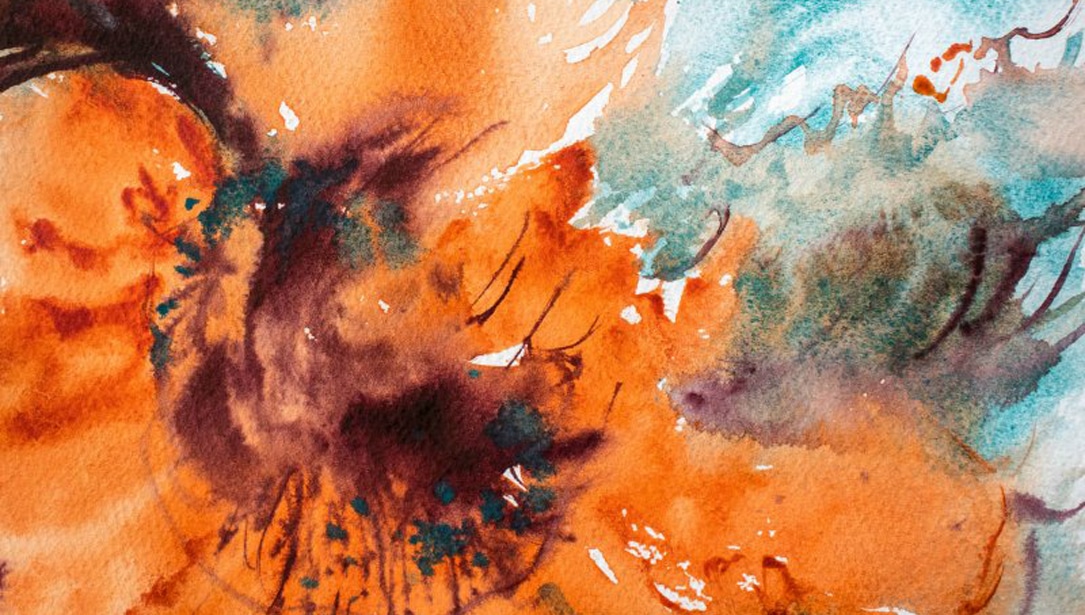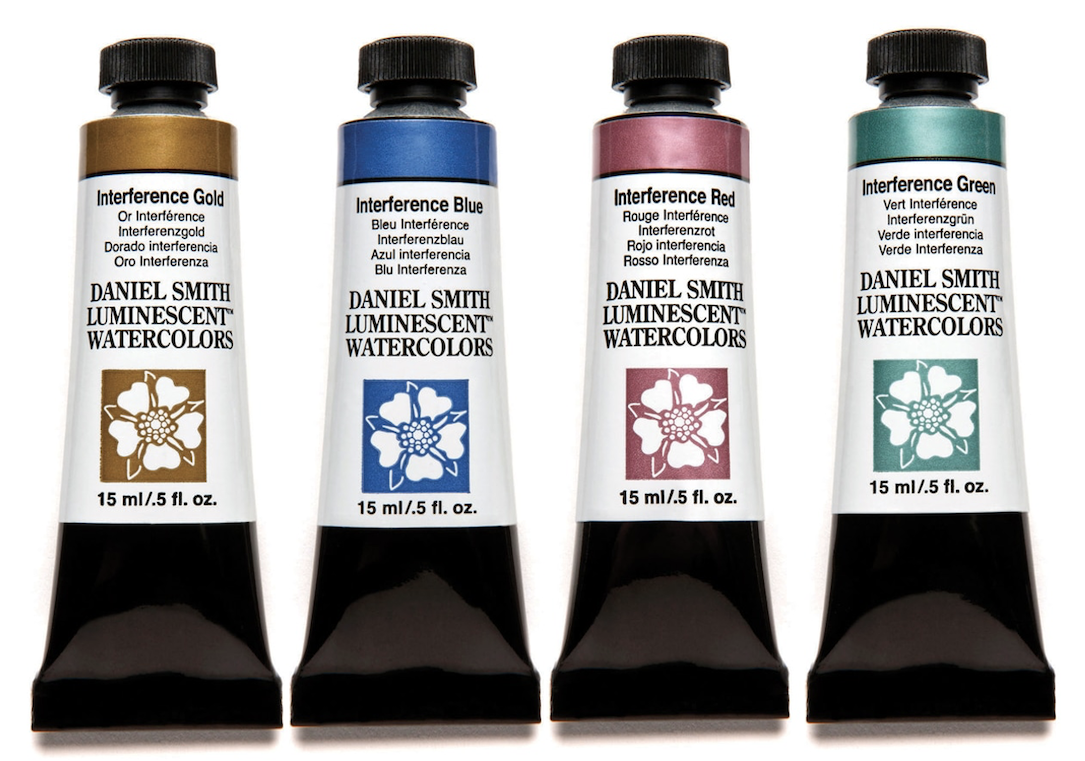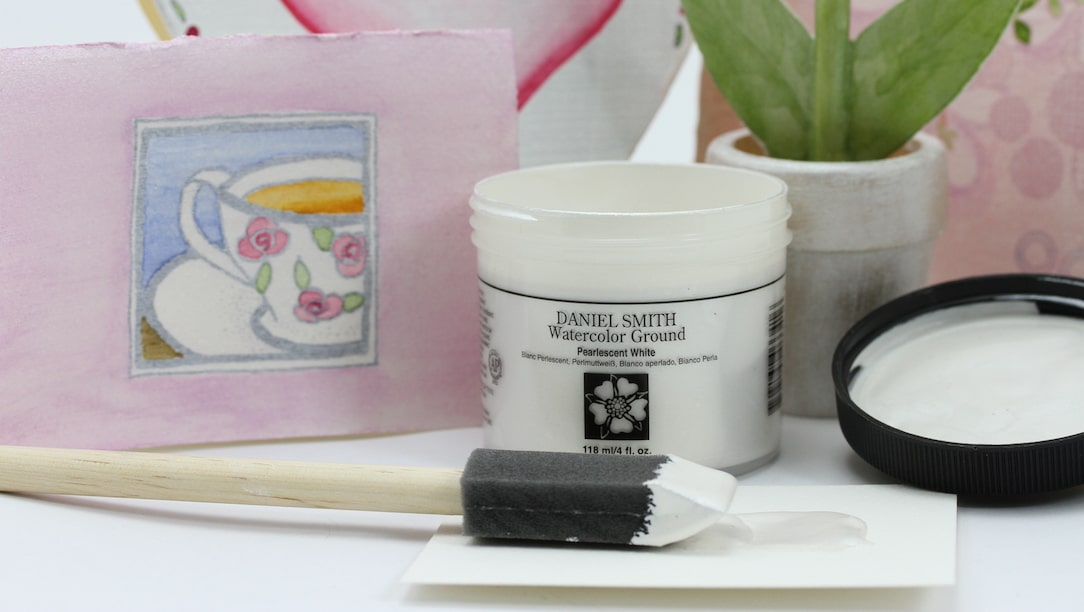Share:
When the DANIEL SMITH Hand Poured Watercolor Half Pan Sets came out, I did what every artist does – SWATCH! – but in my own way; I find that painting an actual picture tells me so much more than just the little rectangles of color ever will! I painted out a mass of flowers with the 6 colors in the Floral: Cottage Gardens to Botanicals Watercolor Set.


Watercolor Practice with the DANIEL SMITH Floral Half Pan Set by Sandy Allnock
This Watercolor Practice painting was created on artist quality, 140 lb cold press watercolor paper using a round #10 kolinsky sable brush. I made a video while painting this, you can see that video at the bottom of my article.

Photo 1. Swatching the colors in the DANIEL SMITH Floral Half Pan Watercolor Set.
Photo 1. I drew out a rectangle, chose a spot for the title and boxes for the swatches. I went over the black lines with a permanent black marker, and swatched out the colors first.

Photo 2. Dropping in Quinacridone Rose, wet into wet.
Photo 2. First pass for the pink rose (saturated with water) with a little Quinacridone Rose dropped into it, keeping color in the bottom left area of the flower so the light clearly hits the top of the flower.

Photo 3. Adding Quinacridone Gold to warm up the red.
Photo 3. For the warm red rose, thicker Quinacridone Rose with Quinacridone Gold dropped into it warms up the color.

Photo 4. Adding in Green Apatite Genuine and Phthalo Blue (GS)
Photo 4. Add a little Green Apatite Genuine on either side of the red rose – letting the color mix wet-in-wet. Using Phthalo Blue (GS) for the blue flowers, paint some with positive color, and a second stalk by painting water and letting color flow in. Drop in a little Quinacridone Rose and tip the board a little to get colors to mix.

Photo 5. Pink flowers are just swatches of red colors.
Photo 5. Pink flowers are just swatches of red colors, keeping a little drybrushing where possible on a few edges. Work quickly to keep leading edges wet and malleable!

Photo 6. Adding the yellow flowers.
Photo 6. The section of yellow flowers touches the pink flowers – and leaves white space in between to add greens in the next step.

Photo 7. Adding both Green Apatite Genuine and Cascade Green.
Photo 7. See what Green Apatite Genuine looks like when it touches the Cadmium Yellow Medium Hue – and then try the Cascade Green. Many different types of colors can come from this one set of 6 colors!

Photo 8. Adding details!
Photo 8. Let everything dry completely, then move on to pass 2: details!
For the roses, decide where the center is and paint semi-concentric circles but keep them uneven. Let edges touch, and allow some to disappear entirely. Only paint part of the rose – let the sun “blow out” the detail in the highlight portion of the flower.

Photo 9. Adding deeper color to the blue flowers.
Photo 9. The blue stalks are bell-shaped, so the darkest color goes into the deepest part near the top of the open bell; blend it at the bottom with water – and soften the whole thing with a spray of water.

Photo 10. Defining ruffly edges on the pink flowers.
Photo 10. Blooms created on the pink flowers can help define ruffly edges; use pigment and water to create negative edges around individual blossoms.

Photo 11. Adding centers to the pink flowers.
Photo 11. Add centers to the pink flowers, pulling out star-shaped centers with water.

Photo 12. Adding stamen to the yellow flowers.
Photo 12. Adding little stamen to some of the yellow blobs (flowers) just to add a hint of detail.

Photo 13. Adding definition with negative painting to the green areas.
Photo 13. If green areas need definition, do some negative painting to reveal leaf shapes in those areas.

Finished Floral Watercolor Practice painting by Sandy Allnock.







